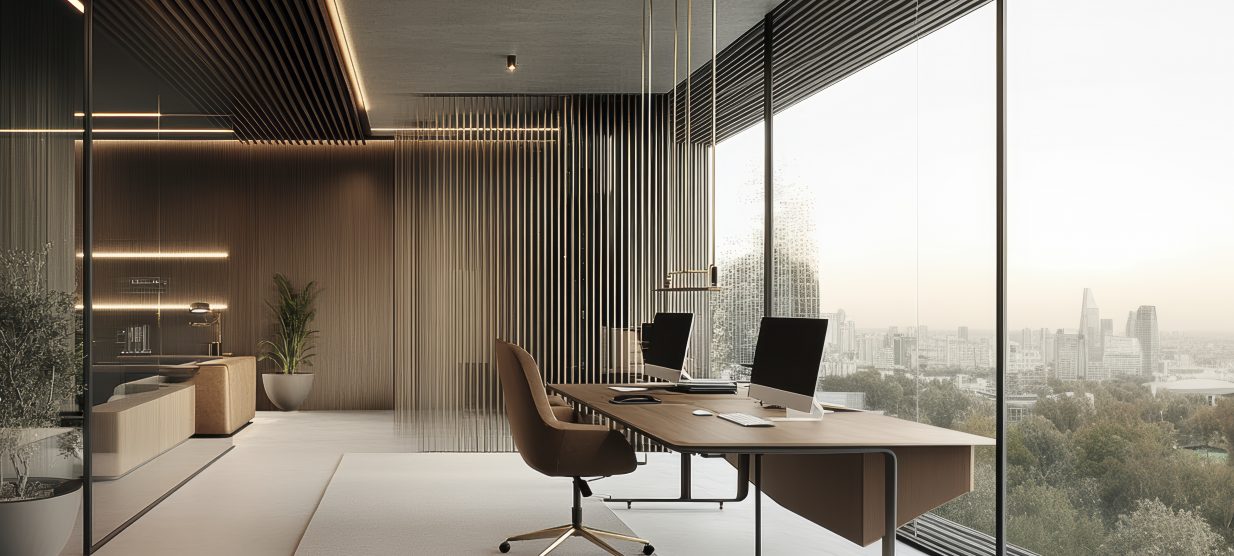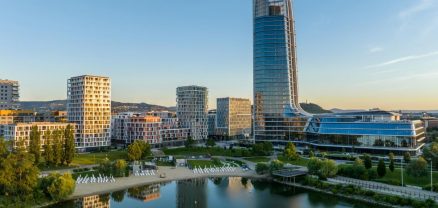The Future of Serviced Office Design Trends
The landscape of serviced office spaces is shifting dramatically, driven by modern business needs and evolving employee expectations. Gone are the days of cookie-cutter office setups. Today, serviced offices are at the forefront of innovation, incorporating sustainability, cutting-edge technology, and designs focused on flexibility. These emergent trends don’t just reshape how offices look; they redefine how we work.
Sustainability as a Cornerstone
Sustainability is no longer a mere add-on; it’s a necessity. Businesses and employees alike are becoming increasingly mindful of their environmental impact, and this consciousness is reshaping serviced office design.
Environmentally-friendly materials such as reclaimed wood, recycled metal, and low-VOC (volatile organic compounds) paints are frequently used in modern office interiors. These choices not only lower the space’s carbon footprint but also create healthier environments for tenants. Offices are also incorporating biophilic designs, featuring natural elements like indoor plants, living walls, and plenty of daylight. Studies have shown that such designs improve air quality and boost productivity while reducing stress.
Beyond materials, many serviced offices are adopting green practices, like enabling energy efficiency through LED lighting and smart thermostats. Some even go the extra mile by installing solar panels or incorporating rainwater harvesting systems. Serviced offices that provide eco-conscious workspaces not only contribute to sustainability but appeal to businesses looking to align with environmentally-friendly values.
The Role of Technology Integration
Technology is revolutionizing serviced office design, creating smarter and more connected spaces. From seamless booking systems to customizable office settings, technology is becoming an integral part of the workspace.
One of the dominant trends is the use of IoT (Internet of Things) devices to customize and simplify the tenant experience. With smart systems, employees can control lighting, temperature, and even desk heights through mobile apps. These systems are designed for comfort, personalization, and efficiency, ensuring that every corner of the serviced office is optimized for productivity.
Another emerging technological feature is hybrid collaboration tools. With remote and hybrid work models becoming more common, serviced offices are incorporating advanced video conferencing systems, interactive whiteboards, and high-speed internet to support distant communication. These tools enable businesses to remain agile while fostering seamless collaboration.
Additionally, AI-powered office management systems are gaining traction. These tools analyze space utilization, energy consumption, and other data points to streamline operations. For example, businesses can receive insights on how meeting rooms are used or identify underutilized space, allowing them to make informed changes.
Flexible Spaces for Evolving Needs
Flexibility remains the core of serviced office design, as businesses demand adaptable solutions that meet their changing needs. Modular furniture, movable partitions, and reconfigurable layouts are becoming the new standard.
One common approach is the integration of multi-purpose spaces. A single area might serve as a casual breakout space in the morning, transform into a collaboration zone by midday, and host a formal event in the evening. This versatility makes serviced offices especially appealing to businesses that value dynamic working environments.
Offices are also championing activity-based working, where spaces are tailored for specific tasks like brainstorming, focused work, or relaxation. Dedicated quiet zones for deep work are complemented by open-plan areas designed for team collaboration. Meanwhile, lounge areas and wellness zones ensure employees have access to spaces where they can recharge.
These adjustments are particularly relevant as more organizations adopt hybrid work models. Serviced offices are designed to be the bridge between remote work and traditional office settings, giving businesses the options they need without long-term lease commitments or restrictive layouts.
Inclusivity in Design
Inclusivity is becoming an important aspect of modern serviced office trends, ensuring spaces cater to everyone. Designs now consider diverse accessibility needs with wheelchair-friendly layouts, speech-to-text technologies, and quiet rooms for neurodivergent individuals. Ergonomic furniture and natural lighting are also part of making these offices universally comfortable. This forward-thinking approach isn’t just ethical; it enhances collaboration and employee satisfaction.
Looking Ahead
The future of serviced office design is about catering to people and the planet. By combining sustainability, technology, flexibility, and inclusivity, serviced offices are well-positioned to meet the evolving demands of businesses. These trends signal more than just aesthetic changes; they represent a shift in how we approach work, focusing on productivity, comfort, and sustainability in equal measure.
For businesses looking to stay ahead, aligning with these trends isn’t just an option; it’s a strategy. Whether you’re a start-up seeking agility or an established company rethinking your operational footprint, the serviced offices of the future provide possibilities that go far beyond traditional workspaces. It’s not just about fitting into a space anymore; it’s about the space fitting you.

Do not hesitate to contact us
Get in touch, if you have any question


